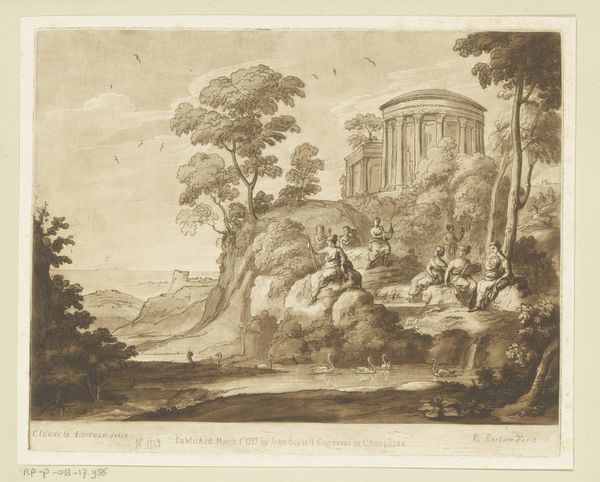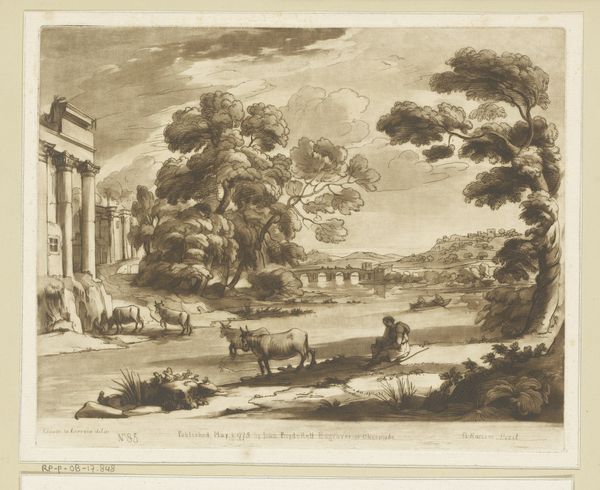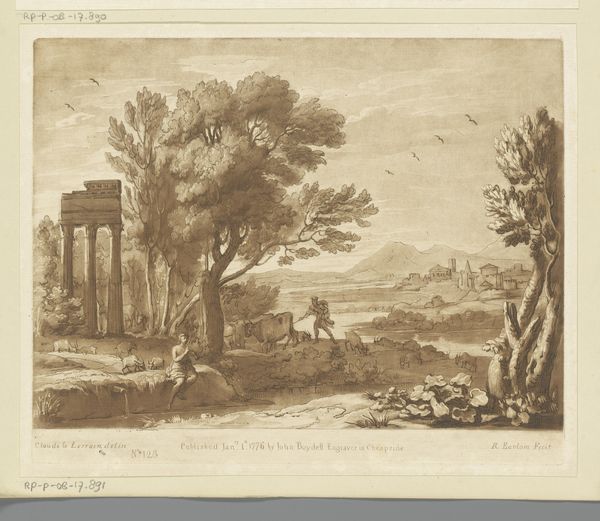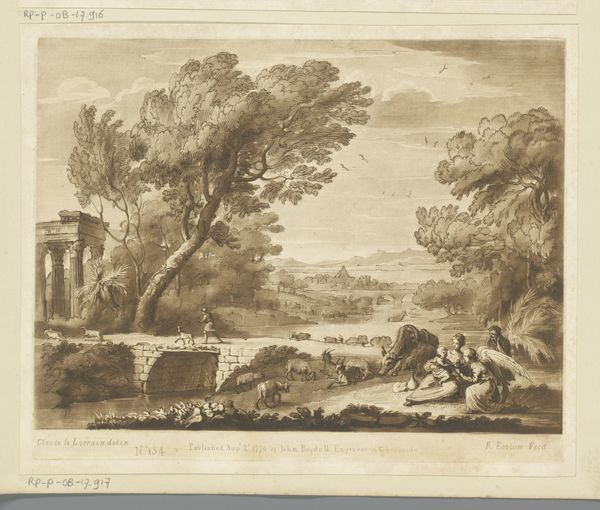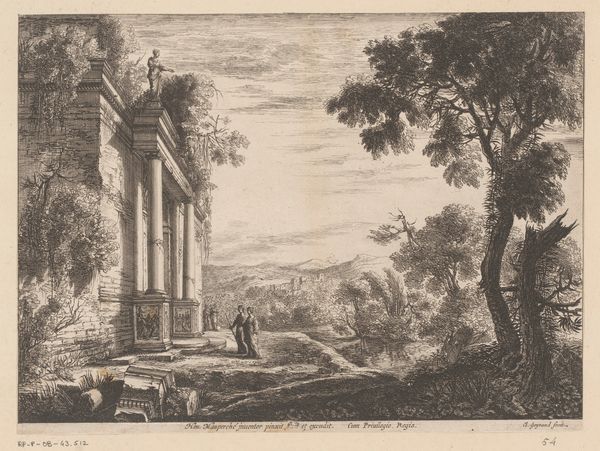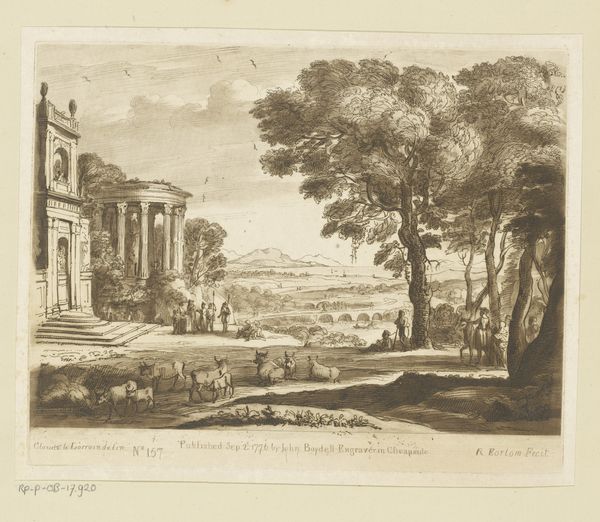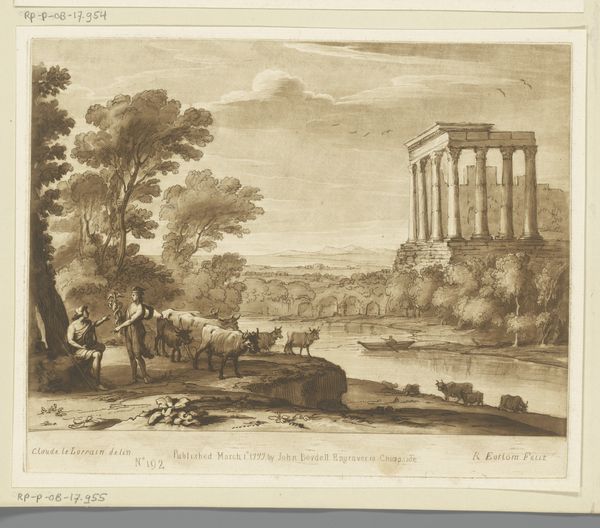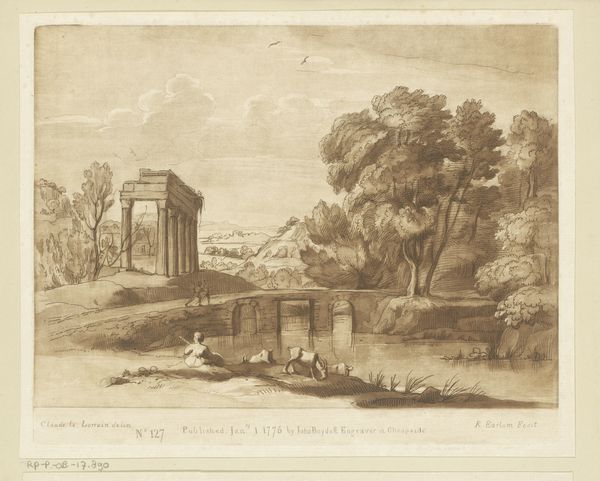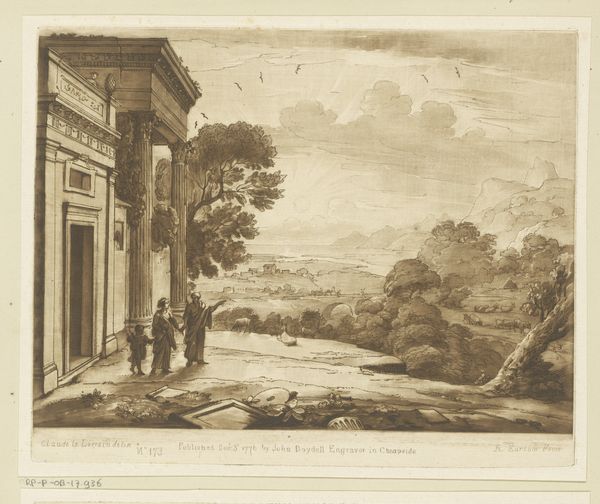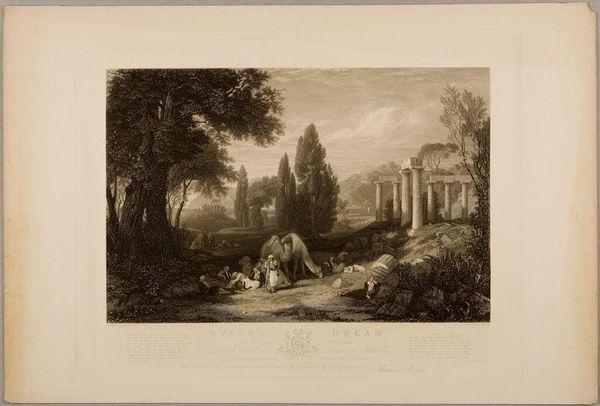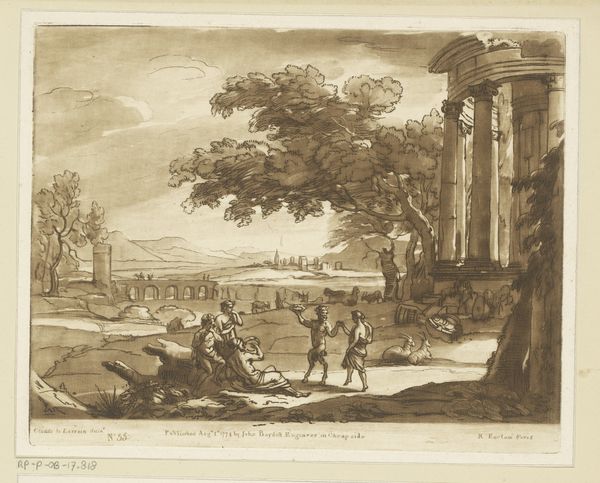
Landschap met Mercurius die Argus in slaap speelt met zijn fluit Possibly 1776 - 1779
0:00
0:00
richardearlom
Rijksmuseum
engraving
#
landscape
#
classical-realism
#
history-painting
#
engraving
Dimensions: height 207 mm, width 259 mm
Copyright: Rijks Museum: Open Domain
Editor: This is Richard Earlom's engraving, "Landscape with Mercury playing Argus to Sleep with his Flute," likely from 1776-1779. The scene is quite idyllic, but there’s also something unsettling about the almost staged composition. What do you see in this piece beyond the immediate landscape? Curator: I see a potent allegory for power dynamics, deception, and ultimately, control. While seemingly pastoral, this scene from Ovid's Metamorphoses embodies the insidious nature of authority. Mercury's flute isn't just creating pleasant music; it's lulling Argus, the all-seeing giant with a hundred eyes and a symbol of surveillance, into a vulnerable state, for sinister aims. What implications might this have at a moment with an expansion of capitalist power in England, where seeing, knowing, and therefore, owning became more highly sought after and commodified than ever? Editor: That's fascinating. I hadn’t considered the societal implications of "surveillance" in that way. So the landscape itself becomes a site of contested power, rather than just a pretty background? Curator: Precisely! The Arcadian landscape here masks an act of manipulation. The classical architecture, while seemingly representing enlightenment ideals, may actually become a structure that contains the narrative's underlying violence. We need to think about whose perspective dominates. Earlom, by choosing this scene, might also be hinting at the seductive dangers of unchecked power, or, if we view it more critically, he is partaking in the fetishization of land as possession by the powerful. Do you find it celebratory or critical, when we examine from this perspective? Editor: I think I lean more toward critical, especially knowing the history and how these images can uphold existing power structures, however passively. This reframing is thought-provoking. Thank you! Curator: My pleasure. Looking at art with these questions in mind enables us to unearth historical power structures and challenge narratives.
Comments
No comments
Be the first to comment and join the conversation on the ultimate creative platform.
